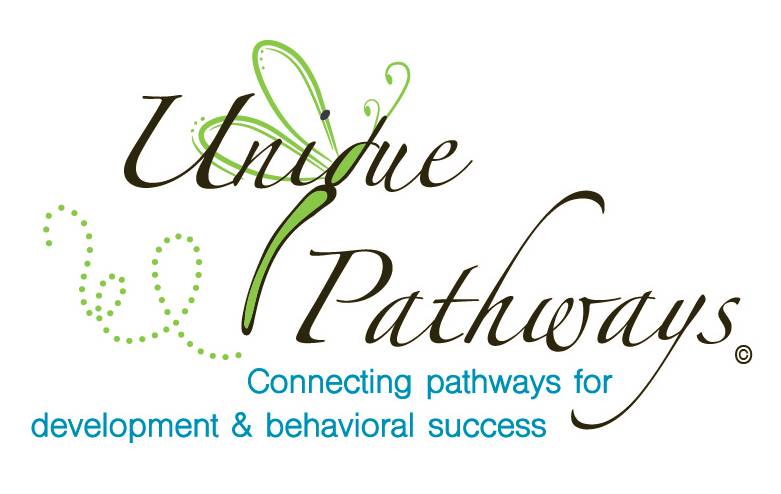Autism Spectrum Disorder (ASD) is more than just a diagnosis; it’s a reality that millions of families live with every day, impacting how children understand, communicate, and relate to the world around them. Recognizing the signs of autism early can open doors to critical interventions that significantly enhance the development and quality of a child’s life.
In this blog, we’ll explore the essential tools and processes used in autism testing and understand why grasping the nuances of ASD early in life is vital. Whether you’re a concerned parent, a dedicated educator, or a healthcare professional, this guide aims to empower you with knowledge and insights to support the children in your care.
Importance of Early Testing
Detecting ASD early in a child’s development is crucial. Early diagnosis allows for timely intervention, which can significantly impact a child’s ability to communicate and interact with others. Studies show that children who receive early and intensive behavioral interventions often experience substantial improvements in intelligence, language ability, and daily living skills. The benefits of early intervention not only improve quality of life but can also decrease the cost of lifelong care.
Key statistics from the American Psychiatric Association suggest that early detection and subsequent intervention can improve outcomes in up to 80% of children with autism. This underscores early action’s profound impact on a child’s development.

Common Screening Tools
Early screening for autism is a critical step towards a formal diagnosis and subsequent treatment planning. Here are some of the most commonly used autism screening tools:
Autism Diagnostic Observation Schedule (ADOS)
The ADOS is a standardized diagnostic tool used to assess autism. It accurately measures autism symptoms by observing social interaction, communication, play, and imaginative use of materials. Administered by professionals like child psychologists or pediatric neurologists, this tool involves several tasks where the child interacts socially and non-socially with an adult. This direct observation is important for assessing various aspects of ASD.
Modified Checklist for Autism in Toddlers, Revised (M-CHAT-R)
The M-CHAT-R is a widely used screening tool designed to help parents and professionals assess the risk of ASD in toddlers aged 16 to 30 months. This questionnaire consists of 20 questions that parents answer based on observing their child’s behavior. If the screening results indicate a high risk of ASD, further diagnostic evaluations are recommended. This tool is valuable because it is simple, quick, and can be administered without specialized training.
Childhood Autism Rating Scale (CARS)
CARS is used to evaluate children over two years old to determine the presence and severity of autism. This tool helps distinguish between children with autism and those with other developmental disorders through 15 criteria, including relationships to people, imitation, emotional response, and body use. Administered by trained professionals, it involves observing the child and rating behavior. The results can help guide further assessments and interventions.
The Evaluation Process: A Closer Look
When you’re embarking on a journey to better understand your child’s world, the process begins with a comprehensive evaluation, an essential step in determining whether a child is on the autism spectrum. This evaluation is not just about labeling; it’s about understanding a child’s unique needs and how best to support their development.
The evaluation process involves several key components:
-
Parent Interviews: This is where the journey begins. As a parent, you’ll share your observations, concerns, and the nuances of your child’s behaviors that might be invisible to others. Your insights are invaluable as they lay the foundational understanding of your child’s world.
-
Behavioral Observations: Here, specialists observe your child in various settings, noting how they interact with their environment, engage in play, or communicate with others. These observations help clinicians see the world through your child’s eyes.
-
Developmental History: Discussing your child’s developmental milestones can help clinicians understand any delays or atypical developments, such as challenges with speech, social skills, or sensory sensitivities.
-
Input from Teachers or Other Caregivers: Since children often behave differently in diverse environments, insights from teachers or other caregivers provide a more rounded picture of your child’s social interactions and learning behaviors.
Pediatricians vs. Specialists
While your child’s pediatrician is often the first point of contact, they usually serve as the gateway to specialists like developmental pediatricians, child psychologists, or neurologists. These specialists dive deeper, employing their expertise to navigate the complexities of ASD.
Online Symptom Checkers
In the digital age, online symptom checkers like the Child Mind Institute’s Symptom Checker have become a go-to for many parents. These tools are designed to be user-friendly and can provide a preliminary assessment of whether further evaluation is needed.
While these online tools are accessible and can be a good starting point, they come with limitations. They can neither capture the full complexity of autism spectrum disorders nor replace the deep understanding that comes from a professional diagnosis.
Despite the usefulness of online checkers, they should never be seen as a substitute for a thorough evaluation by a qualified professional. Autism is a spectrum, and understanding where a child falls on this spectrum is key to providing the best support. A professional autism diagnosis is important as it opens the door to tailored interventions and resources.
Variation in Testing Methods
When it comes to autism testing, one size does not fit all. The methods and tools used can vary significantly across different institutions and regions, reflecting a diverse landscape of approaches and expertise.
For instance, a rural clinic may have different resources compared to a major urban children’s hospital. While some settings might rely on the well-established ADOS (Autism Diagnostic Observation Schedule), others might incorporate newer tools or localized methods adapted to their specific demographic and resource availability.
The choice of diagnostic tools is influenced by several factors including the child’s age, specific symptoms, and the presence of any co-occurring conditions such as intellectual disability or language delay. Clinicians also consider their familiarity with specific tools and the cultural relevance of these tools to the child’s background.
Ultimately, the effectiveness of autism testing hinges on its ability to be tailored to each child’s unique needs. A child who is nonverbal, for example, might need different assessment strategies compared to one who is verbally fluent but struggles with social interactions. This tailored approach ensures that the diagnosis accurately reflects the child’s experiences and challenges, paving the way for more personalized interventions.
Advancements in Diagnostic Tools
In recent years, the field of autism diagnostics has seen exciting advancements, particularly with the integration of technology like AI and machine learning. These innovations are transforming how autism is diagnosed, making the process more accurate and accessible.
AI and machine learning are used to analyze patterns in large datasets, including genetic information and detailed behavioral data. For example, some AI-driven tools can analyze video recordings of a child’s behavior to detect subtle signs of autism that might be missed by the human eye. These technologies are not only enhancing the accuracy of diagnoses but are also speeding up the diagnostic process, enabling earlier intervention.
These technological advancements are particularly important in underserved areas where access to specialized healthcare providers might be limited. AI tools can be deployed remotely, ensuring that children in remote or underprivileged regions can also benefit from expert diagnostics.
Parental Support and Education
Navigating the diagnosis of autism can be a profound journey for parents, one filled with both challenges and opportunities for growth. Empowering parents with the right resources and education is crucial to fostering an environment where children with autism can thrive.
Organizations like the Autism Research Institute offer a wealth of resources, from educational materials to research updates, providing parents with a deeper understanding of ASD. These resources not only help parents make informed decisions but also support them in becoming effective advocates for their children. Support groups and educational programs are also vital, offering parents a platform to share experiences, gain insights, and find emotional support among peers. These programs often teach practical strategies for handling daily challenges and can significantly reduce the feelings of isolation that many parents face.
The involvement of parents in the diagnostic process is indispensable. Parents provide essential historical and behavioral insights that are crucial for accurate diagnosis. Beyond the initial diagnosis, their ongoing involvement in treatment decisions, therapy sessions, and at-home reinforcement of learning activities plays a pivotal role in their child’s progress.

Long-term Impact of Early Diagnosis
Early testing leads to early intervention, which is critical in shaping the developmental path of a child with autism. Interventions can improve everything from language skills to social behavior, significantly enhancing a child’s ability to navigate various life challenges. For example, early speech therapy can address communication barriers, while behavioral therapies can help manage difficulties in social interaction and repetitive behaviors.
Research consistently shows that early intervention can significantly improve the long-term outcomes for children with autism. Studies have found that children who receive early and consistent interventions often have better school performance and improved social interactions compared to those who start interventions later.
Embracing the Journey Towards Understanding
The journey of autism testing and intervention is a collaborative and transformative path that illuminates the unique needs and potential of each child. By understanding the tools and processes involved in diagnosing autism spectrum disorder (ASD), embracing the advancements in diagnostic technologies, and utilizing the support and resources available, parents and caregivers can make informed decisions that positively impact their child’s development.
The early detection of ASD opens up a world of possibilities for effective interventions, tailored education, and enhanced social interactions, setting the stage for a brighter, more supportive future. Let’s continue to work together, armed with knowledge and compassion, to advocate for and support our children on their unique paths.
References:
Autism Diagnostic Observation Schedule (ADOS)
Modified Checklist for Autism in Toddlers, Revised (M-CHAT-R)
Childhood Autism Rating Scale (CARS)









